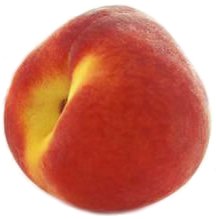

Peaches and Nectarines
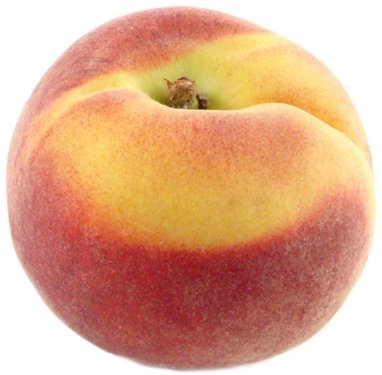
The peach (Prunus persica) originated from China. Its introduction westwards was probably via the old Silk Road through Kashmir and Afghanistan to Persia, and was doubtless assisted by the comparative ease with which worthwhile trees could be grown from seed. From Persia, distribution gradually proceeded through the Middle East and thence into Europe. The nectarine is a smooth-skinned form of the peach (the peach possessing a downy skin); it is common in parts of Turkestan. Distribution of both peach and nectarine to other continents was gradually extended from Europe – by the Spaniards to Central America and thence to North America, by the British to Australia. There are comparatively few records from ancient times but the peach was certainly cultivated by at least 2000BC and is mentioned in classical Greek and Latin texts. There are numerous variations of the peach – cling-stone and free-stone (referring to the degree of adhesion of flesh to stone); red skin to almost white; yellow, green-white and white flesh; round or flattened fruits and with or without a point or ‘nipple’ at the apex. In Britain, as with a number of hardy fruits, it was the influence of Henry VIII that heralded the marked advance of interest in peaches and nectarines, together with importation of new cultivars from the near Continent. John Rea in 1676 listed 35 named cultivars of peach and 11 of nectarine and it was already recognised that wall culture was necessary for any consistent success in the British climate. During the 18th century even more new cultivars were introduced, still with strong Continental, particularly French influence and with special attentiion to fine flavour. By the early 19th century, the Horticultural Society at Chiswick listed over 200 peaches and 70 nectarines in its established collections. Furthermore, peach breeding was now being practised, first by Thomas Andrew Knight and subsequently and into the 20th century by the famous nurserymen Thomas Rivers and Thomas Laxton. This activity was primed by the advances within the gardens of the large estates, where not only wall culture but also cultivation under glass was becoming standard practise. Equally, increasingly fine quality and flavour were called for, resulting in the production of many new cultivars, a number of which are still in cultivation today (e.g. peach ‘Peregrine’ and nectarine ‘Lord Napier’). The passing of the great estates has meant a marked reduction in peach-growing in Britain since World War I. Modern housing estates offer few suitable wall sites and peaches are now rarely grown in gardens. Successful seedlings are occasionally raised but when these are propagated for cultivation elsewhere good results are seldom obtained. 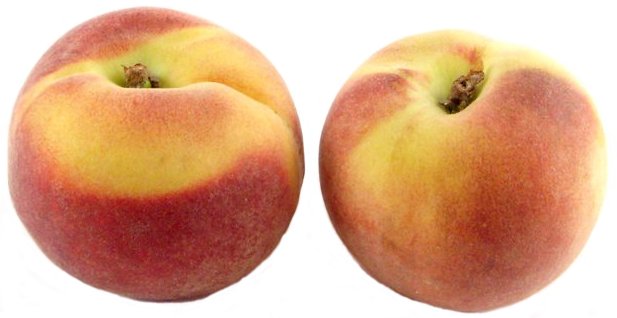
By contrast, peaches and nectarines are widely grown both domestically and commercially in many warmer climates, notably southern Europe, the US (except for the coldest areas), Australia, New Zealand, South Africa and China, and also on a smaller scale in many other countries where climatic conditions are favourable, including the Balkan countries, parts of Ontario in Canada, and Japan. The peach flowers early and so requires suitably warm springs, but any tendency towards a tropical climate will not provide adequate winter chilling. For success the peach must have a site that is either not predisposed to early spring frosts or gives adequate protection from them. In Britain a warm wall of southerly aspect is generally necessary. Another severe limiting factor in the open garden is the widespread incidence of the disease peach leaf curl, which severly debilitates trees and frequently renders them worthless. This is less extensive on some favoured walls and almost non-existent where trees can be protected, for example by polythene, from winter and early spring rains. Examples of trees giving consistently successful results in the open garden are occasionally found in southern England where the micro-climate of the site is favourable, and in most cases the cultivar is ‘Rochester’ or a chance seedling. In the US colder slopes are sometimes used to delay flowering and reduce spring frost risk; in South Africa yellow-fleshed cling-stone cultivars are confined mainly to areas with cold winters and hot summers, such as the Transvaal High Veld, parts of the Orange Free State and the Cape, while in Australia cultivars with a low chilling requirement are now available for cultivation on the east and west coasts. Peach and nectarine trees are not long-lived. This is partly due to the need for the tree to produce a constant supply of young shoots – it is only the young one-year-old wood that carries fruit, although a few fruiting spurs are also formed. It is therefore important to select a site with at least reasonably good soil and with good drainage. The pH level should be between 6.0 and 7.0, and on soils with higher readings problems from lime-induced chlorosis may well be encountered. Conversely, soils with pH 6.0 or less may well need a light application of lime worked in before planting; old mortar rubble or crushed lime grit is also useful on heavier soils. 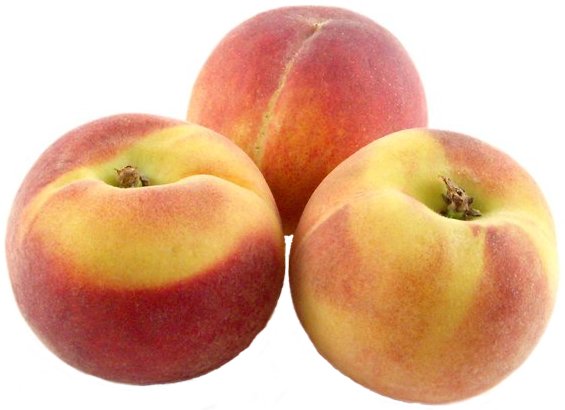
Although seedlings often produce good crops of excellent fruit, it is essentially the selected, named cultivars that are propagated. In common with many hardy fruits, this requires the use of rootsocks for budding and these fall into two distinct categories – either seedling each or selected clonal plum rootstocks that are known to be compatible with the peach and nectarine. The former will produce quite large trees although close planting in some commercial orchards (even as close as 2m) will induce early fruiting and smaller tree dimensions. Of the plum rootstocks ‘Brompton’ (vigorous) and ‘St. Julien A’ (semi-vigorous) are widely used. In Australia, it is recognised that plum rootstocks are more tolerant of wet conditions and that root rot can be caused by soil nematodes, for which specially selected resistant rootstocks are now available. Clonal plum rootstocks are at risk from virus infection unless they are obtained from virus-tested stock. A very wide range of cultivar is available. As they have different chilling requirements, local advice should be sought on which are best suited for individual localities. Breeding programmes are helping to widen the choice available and to make successful cultivation possible over a wider climatic range. The different types available may be classified approximately as follows: (i) Peaches: (a) white-fleshed and predominately free-stoned, (b) yellow-fleshed, of firm texture and free-stoned, (c) yellow fleshed and cling-stoned; (ii) Nectarines. For canning purposes cultivars in group (c) are the most widely grown. Cultivars common to several countries (e.g. Australia and the US) are ‘Elberta’, ‘J. H. Hale’ and ‘Red Haven’, all yellow-fleshed and with a free stone. A very large number of similar peaches is available in the US, including the hardy ‘Canadian Harmony’. White-fleshed cultivars such as ‘Babcock’ and ‘Carolina Belle’ have finer flavour but with softer flesh which renders them less suitable for commercial production and marketing. Any commercial planting requires special attention to this and to the time of maturity and harvesting. Once ripe, the fruit will not hang on the tree for long and must be gathered extremely carefully to avoid bruising. A choice of cultivars to give a succession of ripening is desirable for continuity of picking and an even supply of fruit. In the US, genetic dwarf peaches are available, growing only to 1-2m and produced almost exclusively for garden cultivation. An example is ‘Honey Babe’. Nectarines have overtaken peaches in many places as commercial fruits for exporting. Of the many available in the US, ‘Gold Mine’ and ‘Red Chief’ are recommeded white-fleshed cultivars. The more numerous yellow-fleshed include ‘Fantasia’, ‘Flavortop’, ‘Garden State’, ‘Hardired’ (very hardy), ‘Independence’, ‘Mericrest’ (very hardy), ‘Panamint’, ‘Red Gold’, ‘Sun Glo’ (hardy), ‘Sunred’ and ‘Surecrop’. ‘Necta Zee’ and ‘Nectar Baby’ are genetic dwarfs. In the UK, some cultivars are known to succeed under the right conditions but few are generally available. Those commonly listed are peaches ‘Peregrine’ (white-fleshed) and ‘Rochester’ (yellow-fleshed), both mid-season, and nectarines ‘Lord Napier’ (mid-season) and ‘Pineapple’ (late). A limited number of sources may offer additional choice, such as peaches ‘Duke of York’, white-fleshed, and ‘Hales Early’, pale yellow flesh, both early; ‘Royal George’ and ‘Bellegarde’, both late and with pale yellow flesh; and nectarines ‘John Rivers’ (early) and ‘Elruge’ (late), which was raised at Hoxton, London during the reign of Charles II. If a tree is to be tried in the open garden, the yellow-fleshed ‘Rochester’ is acknowledged as being the most likely to succeed, although it is only of moderate quality. 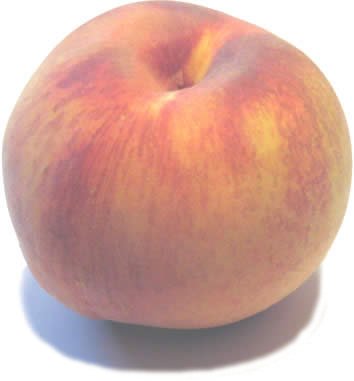
Predominately, peaches and nectarines are satisfactorily self-fertile, although the peach ‘J. H. Hale’ is one of the exceptions. Some authorities maintain that in commercial plantations a mix of cultivars is preferable to allow cross-pollination. Self-fertility relies on satisfactory pollination, and the siting of trees, be it in the garden or orchard, must encourage this by giving the most sheltered conditions possible. Suitable windbreaks should be established where called for. Flowering is very early, even occurring in late winter if there has been prolonged mild weather, and in these circumstances in the garden situation hand-pollination may be essential to supplement any pollination by insects and so ensure a good set. Using a soft camel-hair brush or some cotton wool on a stick, the centres of flowers are gently brushed to transfer the pollen from anthers to stigma. This is done daily during flowering, preferably in the middle of the day when pollen will be dry and transfer more easily, but not under wet conditions. In the rare event of a cultivar requiring cross-pollination (e.g. ‘J. H. Hale’) it would be essential to obtain some flowering growths from another cultivar and transfer pollen from these or, failing this, to place the growths in jars of water and suspend these in the tree for which the pollen is required. Visiting bees and other insects will then effect cross-pollination as they work the tree. Planting should be done by mid-winter if possible. This ensures good establishment with some rooting possible before growth begins. Delay into late winter gives only a brief period before bud development begins and this can suffer if the root system has not yet taken hold. Since likeliest success in Britain will be on a wall site, the soil quality must be considered unless the ground is known to be fertile. Wall footings frequently take up some of the rooting area, and annual coverage of weeds and grass may have reduced drastically the availability of soil nutrients. Where such conditions exist it is essential first to eliminate pernicious weeds; if herbicides are used the necessary time clearance must be observed before planting. Subsequently, the planting site should be specially prepared by laying broken turves upside-down at the base, these being covered by good loam or garden soil. The turves should lie at least one spit down, and a little well-rotted manure can be added with the loam. Where such treatment has been required, it is vital to ensure thorough firming throughout. Trees planted in open ground are best supported by a stout bamboo cane or small stake for the first two seasons. Any possibility of bad drainage must be attended to before planting, and on heavy soils planting on a slightly raised bed may be advisable. In early spring a mulch of garden compost or rotted manure should be applied around the tree, mainly to conserve soil moisture so that growth is not impaired, and to smother weeds. Planting distances should be 5-7m for bush, 3.5-6m for fan, the larger distances for trees on peach seedlings and Brompton rootstocks. 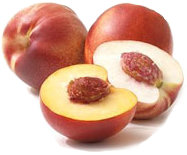
Numerous tree forms are common in countries like Australia where peach and nectarine cultivation is easy and widespread. The vase-shape or goblet-shape bush in common but other types such as centre-leader, varying forms of palmette and other specialised systems are also used. In Britain, two tree forms predominate – the bush for open cultivation and the fan for wall-training. Whatever tree form is used, it is important to establish a distinct branch system which is subsequently used to produce an annual succession of young shoots for fruiting the following year. This is vital since, unlike apples and pears, the peach and nectarine shoots carry fruit only once, after which they are bare and unproductive. TRAININGShaping for the desired form should be done in the spring following planting as growth is beginning, not in winter which encourages disease infection. BushMaiden peach and nectarine trees normally carry plenty of laterals and four or five of these should be chosen, well-spaced, to form the basic branch system. Cut them back to one-third of their length and remove the centre leader immediately above the topmost lateral selected. One or two extra possible laterals may be left to carry the first few fruits the following year (subsequently to be removed), but the lowest should be pruned off completely to leave a clean stem of at least 0.5m. In the following spring more shoots are then selected to expand and extend the branch system and these sub-branches are cut back to half their length. Other side-shoots may need shortening to 10-15cm. FanWhere a maiden tree has good laterals, choose two of equal vigour 25-30cm above ground, one on the left and one on the right, and remove one-third of their length to a good bud. Tie the pruned shoots to a cane at a little less than 45º to the ground, the bamboo in turn being secured to horizontal support wires. That part of the tree above the selected laterals is pruned off immediately above them, together with any other unwanted laterals, the pruning cuts being coated immediately with a wound sealant. In the case of a maiden not possessing suitable laterals, cut the tree back to a good bud or lateral 50-60cm above ground; also cut out completely any excessively vigorous laterals but prune others back to one or two buds. As growth develops, keep shoots at the top of the central stem pinched back to one or two leaves. From the remainder select two of good and equal vigour as nearly opposite each other as possible and about 25-30cm above ground level. These two shoots will form the initial main branches of the fan and are the equivalent of the two laterals selected on the well-feathered maiden at first, as described above. Once these shoots are well-developed and about 45cm long, they should be tied down carefully to bamboos (as described above). Meanwhile, all other shoots, although shortened by pinching, are retained in reserve in case a replacement shoot is needed following accident or disease. 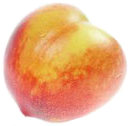
Once the two main shoots are well-developed and tied down, normally by mid-summer or soon after, the central stem is cut away immediately above them and the wound painted with a wound sealant. The following spring these shoots are reduced by one-third of their length. Thus the development of the initial stage from a maiden without laterals takes one year longer than that with laterals. In the following season, four good shoots should be trained in on either side – one to extend the existing branch, one into the space below it and two above. Those above should be trained at a wide angle to avoid upright growth which may encourage excessive vigour and unbalance the tree shape. All other side shoots should be pinched back to one bud. The resulting bare centre of the fan will be filled in naturally within two or three years by less vigorous sub-branches and side-shoots. The following spring the four branches on either side are pruned by about one-quarter of their length, adjusting this as necessary to obtain equal balance. More strong shoots should develop freely, the best placed of which are again chosen as further branches to fill in the remaining wall space; possibly a fourth season may be necessary to complete the fan but this will vary from tree to tree. Meanwhile, many side shoots will have formed and the treatment of these for cropping is covered below. At all stages in the development of a fan, any shoots of excessive vigour must be cut out completely as soon as they become apparent. Where selected shoots vary unduly in vigour, the strong shoots should be depressed to a horizontal position, the weaker one more upright. Once vigour is evened out the shoots can be returned to their normal position. PRUNINGIn all cases, the need for pruning out older fruited shoots in favour of young shoots is the aim. Pruning is done while the tree is in active growth, not during the winter when the risk of disease infection is greater. 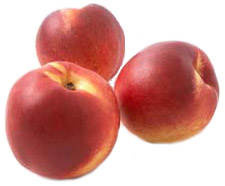 Bush
Bush
In spring each year, cut out a proportion of older shoots where possible to a visible wood but also after fruiting to a young shoot. Keep the centre of the tree open. Select strong new shoots to replace old branches that are too low and remove any that are crowded or crossing. By doing this annually, a maximum of young wood is maintained to aid fruiting capacity and the longevity of the tree. Vase-shaped bushes in Australia, New Zealand, etc. receive much harder pruning, first by summer thinning, then by pruning back fruited shoots to replacements after harvesting, spacing these at 45cm to avoid over-cropping. FanIn spring select two new shoots arising from existing growths (the latter should carry both growth and fruit buds) one from the base and one half-way up. Remove any others near the base, together with any growing awkwardly between tree and wall, and shorten the remainder to one leaf to help feed developing fruits. Tie the new shoots in where possible. Where space allows, the terminal growth extending the fruit-bearing lateral can also be trained in immediately. After the fruit has been gathered, either cut the fruit-bearing lateral back to the replacement shoot(s) or, in younger trees, tie in all new shoots to fill existing space. On older trees good new shoots may replace older, weakened branches where necessary. Balanced nutrition is important to ensure adequate production of young wood for fruiting. Starved trees can quickly deteriorate with attendant shortening of their useful life. Regular applications of a compound fertiliser, rather higher in nitrogen and potash than phosphate, should be given at about 75g/m² in late winter, followed by a good mulch of well-rotted manure or compost when the soil is moist. After flowering, a liquid feed high in potash can also be given to induce quality and disease resistance, repeating the application every 2-3 weeks where desirable. Under British climatic conditions feeding must be adjusted in relation to tree performance – thus where little or no fruit is carried and growth is at least good, feeding should be withheld. A mulch is particularly valuable in conserving soil moisture in dry seasons, doubly so in countries with hot, dry summers. 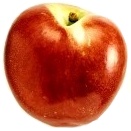
Irrigation in summer may be essential for well-trained trees; apply approximately 5 litres around each tree every 10-14 days. In countries with hot, dry summers and with restricted water supplies, trickle irrigation is now widely used and is essential to successful growth and fruiting. Flood irrigation where practicable may cause problems connected with faulty drainage and water quality. Following successful pollination and fertilisation, fruitlets will begin to swell and the stones form. The number of fruitlets may have to be limited both for the well-being of the tree and to enable remaining fruits to attain good size. Thinning should commence with fruitlets approximately the size of a hazel nut, reducing them to one per cluster and 8-12cm apart. Once of walnut size, fruits should be thinned further where necessary to about 22cm apart. Propagation is by budding in late summer, grafting being possible but much more difficult. Peaches and nectarines in gardens should not be picked until the flesh gives under gentle thumb pressure near the stalk end. White-fleshed cultivars in particular will mark easily if not handled with extreme care. The gathered fruit should be placed in a suitable container lined with soft paper or cotton wool and kept in a constantly cool dark place. Under commercial conditions, fruit is picked slightly under-ripe to enable it to withstand transport and marketing, for which the yellow-fleshed cultivars are preferred. 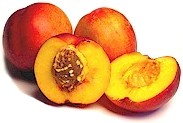
The use of fruit nets as bird protection may be necessary, the nets also being essential where damage to over wintering buds as from bullfinch is expected. Equally, double thickness netting is a considerable aid to frost protection but is a potential hazard if snow threatens, since the weight of any collapsing snow may cause branch breakage in the tree. Peaches and Nectarines Under GlassWhere climatic conditions are not conducive to regular cropping in the open, cultivation under glass is a practical though laborious alternative. Where background heating is available to guarantee frost protection, trees can be started into new growth and flowering very early, but even without the heat the likelihood of success is high. A border of good deep soil is essential and a fan-trained tree against a wall is the best method to adopt. A lean-to greenhouse is thus ideal: a minimum span of 2.75m is necessary for tree development. Suitably arranged horizontal support wires 7-8cm away from the wall will be needed; in full-span houses greater difficulty will be encountered in negotiating the angle formed by the side and slanting roof and special fittings will be needed to carry the support wires 30-35cm from the glass. However, growths on the young tree are very flexible and can be carefully trained and tied into position to accommodate the angle. Initial training and subsequent pruning, disbudding, pinching and tying in are as already described for fan-trained trees. Regular attention to detail is necessary because development under glass can be rapid. Trees must be subject to continuous ventilation once the crop has been cleared, through autumn and winter, to allow adequate chilling, without which abnormal and unsatisfactory tree performance is probable. Ventilation should be restricted from late winter to give a temperature of 8-10ºC, raising this to approximately 20ºC after ten days, with a night minimum of 4-8ºC. The soil should never be allowed to dry out; skilful watering (coupled with the use of a soil auger) is therefore essential. Also the trees must be syringed on brighter days with tepid water mid-morning and early afternoon; ample ventilation may be necessary to prevent too high temperatures on sunny days but always with care if cold winds occur. This is particularly important during flowering, when the flowers should be lightly dusted with a camel-hair brush or cotton wool to ensure satisfactory pollination. Syringing should be withheld during this period and as fruits approach ripeness, subsequently restarting again following flowering and harvesting. Damping down of the ground should be practised as fruits develop but not during ripening. The syringing and damping down are major factors in keeping infestations of red spider mite at bay. 
Fruit thinning will normally be necessary to a final spacing of 24-30cm. The finer quality white-fleshed peaches (e.g. ‘Peregrine’) should be preferred, together with fine-flavoured nectarines such as ‘Lord Napier’. Feeding should consist of regular light top dressings of well-rotted manure in late winter. If this is lacking, a compound fertiliser high in nitrogen and potash should be applied at 100g/m² followed by liquid feeds high in potash every 10-14 days during the summer, ceasing as ripening approaches. Peach leaf curl will not be a problem under glass, but mildew, aphids and red spider mite will require the necessary preventative measures to be taken. Peaches and Nectarines in Pots and ContainersWhere neither suitable glasshouse nor garden space is available, cultivation in pots or other containers is a possibility. A major advantage is that trees can be moved to warmer frost-free sites (glasshouses, conservatories or patios), during the vulnerable periods of flowering, early fruitlet and ripening, particularly if genetic dwarf cultivars are used. However, skilled regular management is essential to success, particularly watering and feeding. A 30cm or 35cm pot is necessary, suitably crocked, and using a medium-fertility soil-based potting mix. It is best to start with a maiden tree, the roots of which can then develop within the pot. Firm planting is essential and a miniature bush type tree should be developed and managed accordingly. Regular repotting in autumn will be necessary, carefully teasing out some (not all) soil from the top and sides of the root-ball once the tree has been freed from the pot. The latter is washed and dried, crocked, and the tree then replaced with some fresh compost firmed around and over the root-ball. Young trees may require a slightly larger pot and any coarse roots should be removed in favour of fibrous ones. Suitable feeds with high potash content should be given every 10-14 days in summer to supplement the nutrients in the compost, but stopping before fruits ripen. The trees should be kept in the open through autumn and winter to allow adequate chilling, nevertheless protecting the root ball against freezing by plunging the pot in the soil or wrapping it in hessian or other material. The plants may need protecting by netting to avoid bullfinch damage to buds. Pests and DiseasesPeaches and nectarines can be affected by many diseases which attack Prunus subspecies, including armillaria root rot (Armillaria subspecies), bacterial canker (Pseudomonas morsprunorum), brown rot (Sclerotinia subspecies), crown gall (Agrobacterium tumefaciens), leaf curl (Taphrina deformans), powdery mildew (Sphaerotheca pannosa), rust (Tranzschelia prunispinosae), scab (Fusicladium carpophilum), shot-hole (Stigmina carpophila), silver leaf (Chrondrostereum purpureum) and specific replant disease. Many viruses, the most important of which is plum pox, can affect trees in commercial production but are unlikely to be important in gardens. 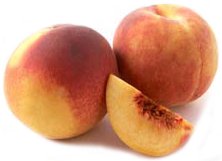
Subject to infestation in Europe and North America by aphids, including the peach-potato aphid (Myzus persicae) and the black peach aphid (Brachycaudus persicaecola); various scale insects, including the oystershell scale (Aspidiotus ostraeiformis), brown scale (Parthenolecanium corni), woolly scales (Pulvinaria subspecies); red spider mites (Tetranychus subspecies); and earwigs and wasps which attack the fruits. In warmer regions may become infested with fruit flies including the Mediterranean fruit fly (Ceratitis capitata). Additional pests in North America include San Jose Scale (Quadraspidiotus perniciosus); the oriental fruit moth (Grapholitha molesta) with pinkish white larvae that tunnel into tips of growing shoots and bore into fruits; the peach twig borer (Anarsia lineatella) with small reddish brown caterpillars which cause damage to shoots similar to that of the previous species; and clearwing moths including the peach tree borer (Synanthedon exitosa) and lesser peach tree borer (Synanthedon pictipes).
|
Home
Grow Herbs
Grow Nuts
Grow Vegetables
Cyberian Index
If you like this website and want one of your own contact
Cyberian All information correct at
time of publication and open to updates as necessary. No part of this website,
or its vectors, may be produced in any shape or form, using any type or design
of medium, system, equipment or otherwise without the prior written consensual
notice of the Cyberian. Any breach of these requirements will result in the
appropriate action. If in doubt, e-mail contact is recommended.
Some components of this website were obtained as open-source software and are
used in the same non-profit manner on this website.